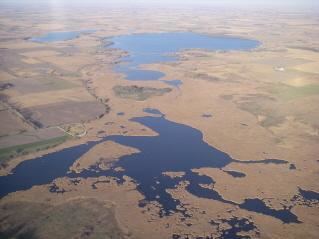Members 700,000 CEO Dale Hall (14 Apr 2010–) Number of volunteers 40,000 | Website www.ducks.org Founded 29 January 1937 | |
 | ||
Key people Paul Bonderson, PresidentDale Hall, CEO Type of business Habitat Conservation and Hunting Similar National Wild Turkey Fe, Delta Waterfowl Foundation, National Rifle Association, The Nature Conservancy, National Audubon Society Profiles | ||
Barton college ducks unlimited commercial
Ducks Unlimited (DU) is an American nonprofit organization 501(c) dedicated to the conservation of wetlands and associated upland habitats for waterfowl, other wildlife, and people. It has maintained a worldwide membership of about 700,000 since January 2013.
Contents
- Barton college ducks unlimited commercial
- Ducks unlimited state convention in clayton ny
- History and profile
- Conservation
- Methods
- Regions of special interest
- Ducks Unlimited TV
- References
Ducks unlimited state convention in clayton ny
History and profile
In 1927, an offshoot of the Boone and Crockett Club was created specifically for sport bird management and operated until 1930 as the American Wild Fowlers. Membership included such people as Arthur Bartley and Nash Buckingham, who would later be very instrumental in the conservation movement. In 1930, Joseph P. Knapp, a publishing tycoon who successfully obtained such notable publications as The Associated Sunday Magazine, Crowell Publishing Company, Collier’s Weekly, Farm and Fireside and the book publisher P.F. Collier & Sons, founded More Game Birds in America and American Wild Fowlers was quickly absorbed into the new organization.
In 1937, Knapp, Robert Winthrop, and a small group of conservation philanthropists decided to focus on the decreasing waterfowl populations, and the habitat necessary to sustain them in Canada, and formed Ducks Unlimited Inc. As had happened before, More Game Birds in America was absorbed by the new waterfowl organization.
Ducks Unlimited Canada was incorporated in Winnipeg, Manitoba, Canada, on March 10, 1937. Ducks Unlimited also works in Mexico through their sister organization, Ducks Unlimited de Mexico. Other chapters have since begun operation in Latin America, Mexico, New Zealand, and Australia.
DU has conserved at least 12.5 million acres — perhaps more than 13.8 million acres — of waterfowl habitat in North America. DU partners with a wide range of corporations, governments, other non-governmental organizations, landowners, and private citizens to restore and manage areas that have been degraded and to prevent further degradation of existing wetlands. DU is also active in working with others to recommend government policies that will positively influence wetlands and the environment. DU generated more than $235 million in revenues during their 2012 fiscal year, of which a minimum of 80 percent goes directly toward habitat conservation. Their sources of revenue include federal and state habitat reimbursements, conservation easements, sponsors and members, major gifts and donations and royalties/advertisement. Through its conservation activities, DU benefits biodiversity, water quality, the environment and the economy in the areas in which it is active.
In keeping with Ducks Unlimited's founders' intentions, the organization promotes the continuation of safe and regulated waterfowl hunting. The majority of DU's financial contributors and 90 percent of members are hunters. Its DU Magazine contains many historical and practical articles on waterfowl hunting, and it obtains revenue from advertisements of waterfowling equipment such as shotguns, ammunition, decoys, and bird calls.
Conservation
Traditionally, most DU wetland conservation projects were conducted on waterfowl breeding areas in the Canadian prairies by its subsidiary, Ducks Unlimited Canada (DUC). DUC has however expanded its operations to include projects in every Canadian province and territory, not just in the prairies. DU has also expanded its operations to include conservation projects in every state of the United States and in Mexico. It retains primary focus on habitats most important to waterfowl; including the restoration of duck breeding habitat in Canada and the northern central states, and also duck overwintering habitat, mostly in the coastal and southern states and in Mexico.
Methods
Ducks Unlimited places strong emphasis on science and research. It works closely with biologists and ecologists to evaluate habitat needs and to monitor how birds respond to various environmental changes. Some of the methods used by Ducks Unlimited to conserve habitats are:
Ducks Unlimited also works closely with government leaders, conservation leaders, private landowners and farmers to ensure that environmental provisions are contained in the Farm Bill. The Farm Bill supports programs such as the Conservation Reserve Program (CRP) and Wetlands Reserve Program (WRP).
Regions of special interest
Ducks Unlimited takes a continental, landscape approach to wetland conservation. While DU works in all 50 states, the organization focuses its efforts and resources on the habitats most beneficial to waterfowl and in greatest jeopardy of disappearing. The following areas are considered to be DU's top 5 conservation priorities:
Ducks Unlimited TV
Ducks Unlimited produces a television show, Ducks Unlimited TV a.k.a. DUTV. This show is hosted by Field Hudnall, Wade Bourne and Ainsley Beeman and highlights conservation and waterfowl hunting from across the United States.
